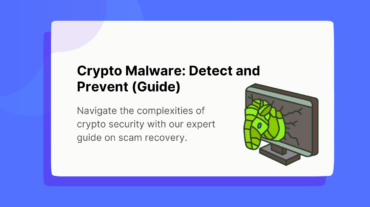Blockchain technology, known as the backbone of cryptocurrencies, has gained worldwide recognition for its decentralization, transparency, and security. However, it is not entirely immune to potential threats. One such significant threat is known as the “51% attack.” To grasp the concept and implications of a 51% attack, we need to understand the basic principles of blockchain technology.
Defining Blockchain and Its Importance
Blockchain can be viewed as a distributed digital ledger where all transactions are recorded and shared among all network participants. This decentralization ensures that no single entity controls the data, thereby offering a robust level of security and transparency. Central to the operation of a blockchain is the idea of consensus, the process through which all network nodes agree on the validity of transactions. This agreement is crucial for maintaining the blockchain’s integrity and security.
Exploring the 51% Attack
A 51% attack is a potential breach of blockchain security, occurring when a user or a group gains control of the majority (more than 50%) of the network’s mining hash rate or computational power. With this control, they can disturb the transaction process and even alter the record of transactions. Specifically, they can double-spend coins, meaning they can spend the same digital coins more than once and impede other miners from validating new transactions.
The repercussions of a 51% attack are severe. It can significantly erode trust in the affected cryptocurrency, leading to its devaluation. Furthermore, it can compromise the integrity of the blockchain, making all operations based on it unreliable. The double-spending problem, an event that blockchain technology primarily aims to solve, can also re-emerge under such attacks.
Noteworthy 51% Attacks in History
Blockchain is designed to be secure, but there have been instances where it has been breached. Notably, Ethereum Classic, a derivative of Ethereum, was subjected to three separate 51% attacks in 2020, resulting in massive losses. Similarly, Bitcoin Gold, a branch of Bitcoin, underwent a 51% attack in 2018, causing over $18 million in losses.
Defensive Measures Against 51% Attacks
Even though the potential for a 51% attack can be concerning, blockchain networks are not defenseless. Larger networks, like Bitcoin, are inherently protected due to their extensive size, making it almost impossible for a single entity to control 51% of the network. Furthermore, some cryptocurrencies have adopted alternative consensus mechanisms like Proof of Stake (PoS) or Delegated Proof of Stake (DPoS), which are less vulnerable to 51% attacks.
Blockchain security continues to evolve to keep pace with potential threats. As more sophisticated security measures and alternative consensus mechanisms are developed, the chances of 51% attacks are likely to reduce. As security strengthens, so does the trust in cryptocurrencies and blockchain technology.
Conclusion
In conclusion, while 51% attacks pose a significant threat to blockchain security, the continuous advancement in blockchain technology presents a hopeful future. The evolving protective measures and the adoption of alternative consensus mechanisms signal a resilient and dynamic future for blockchain technology.
FAQs
What is a 51% attack?
A 51% attack is when a user or group gains control over more than 50% of a blockchain network’s computational power, enabling them to manipulate the consensus mechanism.
What are the consequences of a 51% attack?
The outcomes of a 51% attack can be severe, causing a loss of trust in the blockchain, devaluation of the associated cryptocurrency, and an interruption in transaction processing.
How does the size of a blockchain network affect its vulnerability to a 51% attack?
Larger blockchain networks are less vulnerable to 51% attacks due to their extensive size. It is almost impossible for a single user or group to control more than 50% of such a network’s computational power.
What steps are being taken to prevent 51% attacks?
Blockchain networks are adopting alternative consensus mechanisms and implementing more sophisticated security measures to reduce the risk of 51% attacks.
What was a notable 51% attack?
One of the most notable 51% attacks occurred on Ethereum Classic in 2020, resulting in substantial financial losses.




